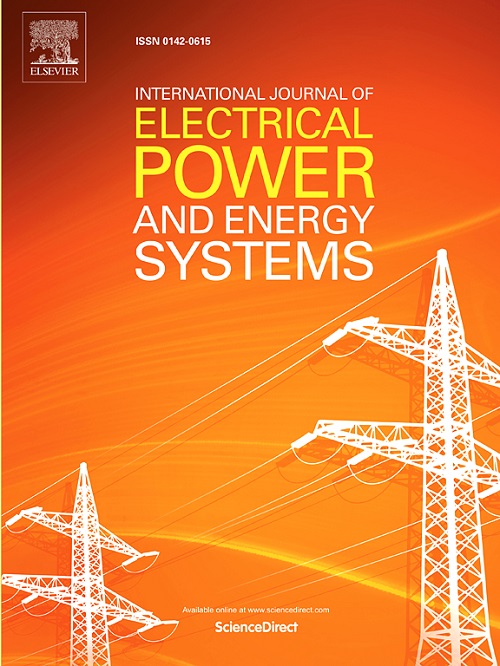基于混合量子经典计算的可再生能源电力系统联发输电扩展规划
IF 5
2区 工程技术
Q1 ENGINEERING, ELECTRICAL & ELECTRONIC
International Journal of Electrical Power & Energy Systems
Pub Date : 2025-09-13
DOI:10.1016/j.ijepes.2025.111115
引用次数: 0
摘要
联合发电-输电扩展规划(JGTEP)问题提供了比单边规划更广泛的可行策略,并在可再生能源主导的电力系统中实现了更有利的成本效益结果。然而,由于发电机组和输电网络中二进制变量的激增,以及非线性时空耦合约束导致的较慢的收敛,它也带来了更重的计算负担。利用量子隧道效应,量子退火在处理大规模二进制问题方面具有显著的效率优势,而经典计算在连续优化和二进制变量初始化方面仍然具有优势。这种互补性促使混合量子经典框架加速JGTEP。具体地说,首先利用Benders分解将问题分解为一个主问题和一个次问题。然后,经典计算机生成主问题的多个可行解,由此构造初始热启动解,并利用这些解的共同特征来降低变量的维数。将主问题重新表述为二次型无约束二元优化模型,并利用热启动量子退火算法在量子退火机上有效求解。最后,迭代求解主问题和子问题,直至收敛。应用于IEEE RTS 24总线系统,与经典方法相比,所提出的量子辅助方法的计算时间减少了70%以上,迭代次数减少了50%,同时也显示出解决更大规模规划问题的强大潜力。本文章由计算机程序翻译,如有差异,请以英文原文为准。
Joint generation-transmission expansion planning in renewables-dominated power systems based on hybrid quantum-classical computing
The joint generation-transmission expansion planning (JGTEP) problem offers a broader range of feasible strategies than unilateral planning and enables more favorable cost-benefit outcomes in renewables-dominated power systems. However, it also imposes heavier computational burdens due to the proliferation of binary variables from generation units and transmission networks, as well as slower convergence caused by nonlinear, spatiotemporal coupling constraints. Leveraging the quantum tunneling effect, quantum annealing provides significant efficiency advantages in handling large-scale binary problems, while classical computing remains superior for continuous optimization and binary variable initialization. This complementarity motivates a hybrid quantum–classical framework to accelerate JGTEP. Specifically, the problem is first decomposed into a master problem and a subdual problem using Benders decomposition. A classical computer then generates multiple feasible solutions for the master problem, from which an initial warm-start solution is constructed, and the dimensionality of variables is reduced by exploiting the shared characteristics of these solutions. The master problem is subsequently reformulated as a quadratic unconstrained binary optimization model, which is efficiently solved on a quantum annealer using a warm-start quantum annealing algorithm. Finally, the master problem and subproblem are solved iteratively until convergence. Applied to the IEEE RTS 24-bus system, the proposed quantum-assisted method achieves more than a 70% reduction in computation time and a 50% decrease in iterations compared with classical methods, while also demonstrating strong potential for tackling larger-scale planning problems.
求助全文
通过发布文献求助,成功后即可免费获取论文全文。
去求助
来源期刊
CiteScore
12.10
自引率
17.30%
发文量
1022
审稿时长
51 days
期刊介绍:
The journal covers theoretical developments in electrical power and energy systems and their applications. The coverage embraces: generation and network planning; reliability; long and short term operation; expert systems; neural networks; object oriented systems; system control centres; database and information systems; stock and parameter estimation; system security and adequacy; network theory, modelling and computation; small and large system dynamics; dynamic model identification; on-line control including load and switching control; protection; distribution systems; energy economics; impact of non-conventional systems; and man-machine interfaces.
As well as original research papers, the journal publishes short contributions, book reviews and conference reports. All papers are peer-reviewed by at least two referees.

 求助内容:
求助内容: 应助结果提醒方式:
应助结果提醒方式:


